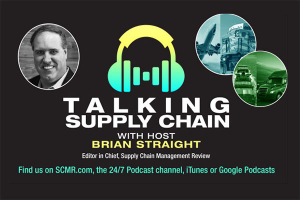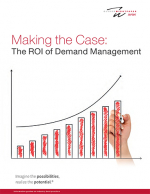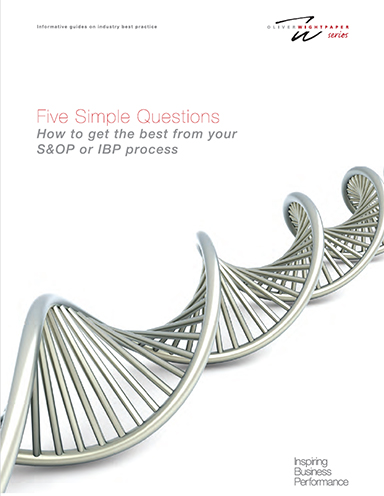How to Get the Best from Your S&OP or IBP Process
In this white paper, we discuss a series of five questions - simple 'must-haves', which can be applied to any organization and which can be used in each of the five IBP review meetings to ensure they address the key issues facing the business in a standardized way, validate the plans and make required decisions.
From S&OP to Integrated Business Planning - Five Simple Questions
At the heart of the Integrated Business Planning (IBP) process is a five-step monthly planning cycle, comprising a series of scheduled review meetings for product or activity management; demand; supply; integrated reconciliation; and the management business review.
Unless organizations implement these meetings effectively to review, present, and communicate progress and change, their Sales & Operation Process (S&OP) will never mature beyond a simple forecast run by the supply chain to estimate required production volumes.
One of the challenges for organizations, which are new to IBP or which are trying to transition from traditional S&OP to IBP, is to make these individual review meetings as productive as possible.
The objective should be to sign off the plan at each step of the IBP process (product, demand, supply, etc.), and 'sign-off' means that every Chair of the five review meetings has agreed:
- The plan is realistic and achievable
- The plan meets the business needs
- Resources and actions requested have been authorized
The IBP review meetings should not be discovery meetings but action-oriented: key assumptions supporting each part of the plan need to be understood; any changes from previously agreed plans acknowledged and the implications of these changes identified; and finally, action plans need to be agreed to support the business over a 24-month horizon.
In order for this to work effectively, each of the IBP reviews plans needs to be visualized, so it can be validated and then signed off. A clear structure is therefore essential to retain focus and to drive key meeting outcomes.
Many companies have developed 'meeting effectiveness templates' to assist in driving S&OP process improvement but often these become overly complicated and as a result, counter-productive.
The Five Question Concept
These are the key questions that need to be considered by all participants and answered by the end of each IBP review meeting in order for plans to be 'signed off':
- How are we performing now? Have we met our stated plans so far? If not, what does this mean with respect to our assumptions for the plan going forward? What do we need to do to get back on track?
- Is the plan valid? Is it realistic? Are the assumptions sound and well understood and are they likely to produce the planned result? Do we believe it, based on the activities as stated?
- Is the plan sufficient? Does it meet our commitments in terms of strategic objectives and the financial targets of a business plan?
- What if? Does the plan contain any key 'sensitivities' (upsides and downsides) that require "what-if" analysis and contingency plans to defend or exploit as required? Have alternative scenarios been presented? What are these and how will they be progressed through the process?
- What is needed to deliver the plan that is not already in place? What additional resources or team alignment are required to ensure the plan can be delivered as stated? What decisions need to be made?
Download Five Simple Questions: How to get the best from your S&OP or IBP process and learn how to ensure that these essential programs have the greatest impact.
What’s Related




Favorites





